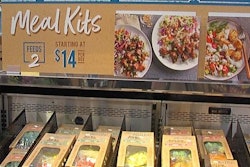
Subscription-based meal kits (SBMKs) are a $1.5 billion industry, and it’s easy to see why. Millions of consumers flock to these companies looking for healthier food options while simplifying their at-home dining routines. However, behind-the-scenes, this process is anything but simple.
Food and beverage supply chains of all types are inherently complex when considering the array of government regulations, safety protocols, freshness concerns, sourcing requirements and high transportation costs. SBMKs up the ante by delivering packaged fresh foods with accompanying recipes to consumers’ doorsteps often within three days from harvest to delivery—but how? What challenges must they overcome to successfully execute?
1) Transportation
With highly perishable goods and the need for cold storage, transportation costs in the food and beverage industry often are high in comparison to other markets. The quick turnaround required to deliver meals at peak freshness and the wide geographic expanse of clients drive the requirement for rapid parcel options and cause transportation costs to be higher for SBMKs.
2) Sourcing
One of the primary means used to reduce sourcing costs is “scale.” In other words, the higher volumes you can buy from a supplier, the more discounts you can receive. At first glance, SMBK’s would appear to be at a significant disadvantage over the more traditional food retailers, specifically the large national grocery chains who can commit to huge volume purchases. However, SMBK’s can overcome this challenge by working scale on the outbound side of the supply chain, dividing supplies into much smaller portions than grocers.
3) Margin-to-Serve
Higher transportation costs and lower sourcing leverage are only two challenges to overcome. Because of the perishable nature of many items, ingredients must be rapidly assembled into meals before being packaged and sent to the consumer, adding labor and handling costs. Because of these higher cost elements, SBMKs must be laser-focused on cost efficiency while simultaneously testing pricing targets to ensure they remain profitable and maintain margins. In order to do so, they must keep materials costs (i.e., food selections) low enough to balance the subscription price and the high transportation costs, while still being unique enough to maintain customer subscriptions.
Luckily, the SBMK model provides more freedom and flexibility than traditional food and beverage supply chains that are committed to specific products on a specific time schedule. To determine which ingredients will go into their meal kits at certain times, SBMKs can analyze various crop performances, or how current logistical constraints will impact the delivery of certain items, and make adjustments to the menu as needed.
Additionally, many SBMKs form partnerships with the farmers that source their food. Through these partnerships, SBMKs are able to direct the farmers to grow certain foods at certain times, at least to a degree, and work closely with farmers when developing new recipes, allowing them to better understand seasonality of food and which farmers will have the most success with a particular crop.
How can SBMKs best design and execute their supply chains amidst these complexities? By establishing a digital model of their end-to-end supply chain to enable optimization of trade-offs between price and service, and to deliver better visibility across functional silos.
In most cases, these efforts have helped create a better understanding of the relationship between each stage of the supply chain including sourcing, warehousing and transportation to enable more advanced cost optimization. I foresee this trend continuing and expanding to more thoroughly consolidate the different supply chain planning time horizons (i.e. strategic, tactical, operational). Ultimately, SBMKs and other organizations will converge design, planning and execution, so that all time horizons are working off the same plan.
One thing is for certain: the benefits are outweighing the challenges for SBMKs, with the number of subscribers continuing to rise. New disruptive products like these meal kits often help launch greater innovation from all parties, including supply chain technology, making it an exciting time for the industry.












